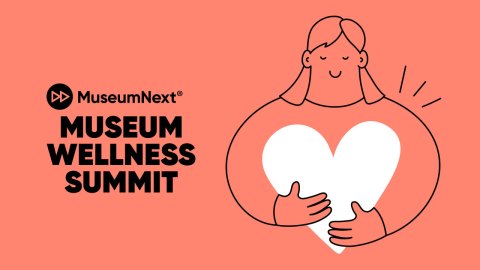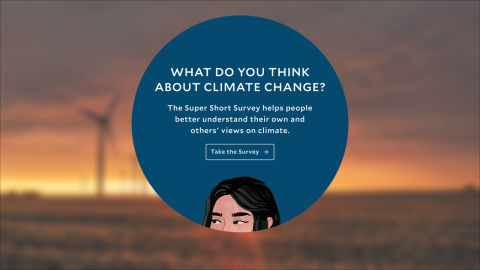
I started writing about artificial intelligence and the implications for museums back in 2017. In the ensuing years, the technology has gone from “on the horizon” to a major disruptor of work, jobs, parenting, dating, and, well, life. Is there anything AI can’t (or shouldn’t) do? Today on the blog, Professor Sarah Anne Carter talks about one area which AI may be unable to improve–object based inquiry.
–Elizabeth Merritt, VP Strategic Foresight and Founding Director, Center for the Future of Museums, American Alliance of Museums.
Over the past year those of us who work in higher education have watched the adoption of AI tools transform our campuses—raising economic, environmental, and pedagogical questions as we all work to prepare our students for impactful careers. Preliminary findings like the MIT Media Lab preprint on the role of AI in essay development, “Your Brain on Chat GPT,” raise important issues and invite thoughtful and nuanced pedagogical responses to when and how to encourage these tools in our teaching.
I recently participated in a retreat focused on using AI in the university, and one assignment invited me to experiment with AI in ways that could be useful to me. I have mentored students on projects that use AI applications effectively and have witnessed a range of helpful possibilities. But for this assignment, I wanted to explore an application that would be immediately practical and applicable to my teaching. Throughout my career, I’ve focused on material culture pedagogy and object-based learning, as a researcher, museum curator, professor, and now director of the Nancy M. Bruce Center for Design and Material Culture in the School of Human Ecology at UW-Madison.
I admit that I am concerned that generative AI could impede my key learning goals of developing students’ critical thinking and writing skills. Rather than negotiate the terms of AI use, I asked the bot: “Can you suggest a course assignment that cannot be done successfully with AI?” After praising my question (“Great question!”), it advised me to design an assignment “that resists automation by AI and encourages original thinking, embodied experience, and contextual nuance.” It suggested a “Field Immersion and Reflexive Analysis” project where the students engage with a museum, archive, or other place or event and then write about their observations and the setting, reflecting on their own positionality and their own experiences through the lens of course concepts.
What I find so exciting about this bot’s response to my cheeky request is the reminder that the cross-disciplinary study of the material world teaches skills that are lasting and durable in a working world being rapidly transformed by AI. It aligns with the object and museum-based teaching I’ve been doing for more than 20 years. Material culture analysis invites a kind of critical thinking that AI queries cannot replicate. These lessons help us to learn how to think and make sense of the world around us, work that supports our thoughtful decision making about that world.
The kind of work that the bot noted that AI cannot do at this point is reflexive and focused on “embodied experience and contextual nuance,” which is central to the object-based assignments and museum-based teaching that I have my own students complete. In the context of readings, lectures, and carefully scaffolded discussions, I require my students to look closely, to ask questions, to try to make sense of what is right in front of them without retreating to a theoretical text or something that can be cut and pasted from the Internet. This kind of work forces them to try to make sense of things, with all of the tools in their mental tool kits.
This is not to say that digital technology does not have a valuable place in teaching. A decade ago, I worked with colleagues to develop an online material culture course, “Tangible Things” through EdX that explored ways to offer this kind of object-based work in a digital space through assignments students complete on local museums and things in their physical worlds.
When you bring your students to a museum or place an unexpected object in front of a group of students—perhaps related to things they have read about or may have some level of personal experience with—you create an opportunity for connection making, contextualization, inquiry, and new research questions. As a material culture student, my own undergraduate professors would bring in carefully chosen mystery objects that forced us to imagine distant worlds in line with the historical research and knowledge we had built in class as well as our understandings of the body and material qualities. I will never forget looking with wonder at a seventeenth-century “Great Salt” brought out from our university museum’s storage just for us. This activity invited synthesis across disparate fields and realms of knowledge and put what we knew and did not know into high relief inviting both new learning and reflection.
This approach is at the heart of the Nancy M. Bruce Center for Design and Material Culture at the University of Wisconsin-Madison. In my own teaching, I often put an object or an object pairing in front of my students and ask them what they notice. I ask them to find connections between the things in front of them and what we read to develop new research questions, to think about what these objects might imply and what doors they might open. Where might we go when starting with these objects as a prompt? In that moment neither instructor nor student can escape from the material realities of those things, making the experience generative for both teachers and students. Each person is the expert on their own lived experience with those things: What do you notice? What do you think? Where do you go from here? What might this suggest or reveal?
Our research center is home to the Helen Louise Allen Textile Collection, comprising nearly 14,000 textiles from around the world and two changing exhibition galleries. Faculty from across the university—from literature and design to botany and financial coaching—frequently use our collection in their teaching. Textiles can become sources of questions about historic techniques, cultural practices, materials, and aesthetics, but they can also launch inquiries about personal values, culture, economics, and the bigger systems objects and people are part of, past and present, and—for students in our Design, Innovation and Society major—future. There are opportunities to connect collections to theoretical texts and concepts students can expand upon in our classroom and in their writing assignments.
I frequently pull objects related to children’s experiences for my courses on the material culture of childhood. Bringing out objects related to children’s lived experiences invites my students to think about the readings that they have done around children’s lives in new ways. What values might this object suggest? How might the person who created this think about gender, age, or autonomy? What rights or choices did these children have? These are questions that you can put on a PowerPoint slide to explore in a lecture… but when you’re looking at objects in front of you on the table or in a gallery, they become pressing and immediate.
I encourage my colleagues from across disciplines to apply the tried-and-true methodology of object-based teaching to create experiences that invite our students to think in new ways. Most universities and communities have museums, collections of objects, archives, art, teaching materials, special library collections, or specimens available for engagement. Use those resources to invite and develop observation, connection-making, and questioning skills that cannot be easily outsourced to generative AI.
Object-based activities invite us to be present in the material world around us, paying attention, making connections, and understanding our very human lived experiences. New AI tools are increasingly part of daily life on university campuses and offer exciting pedagogical possibilities. And at the same time, they may not be the best way to learn how to think critically, ethically, and expansively—thoughtful, object-based lessons can help scaffold that transformative and needed intellectual development.







